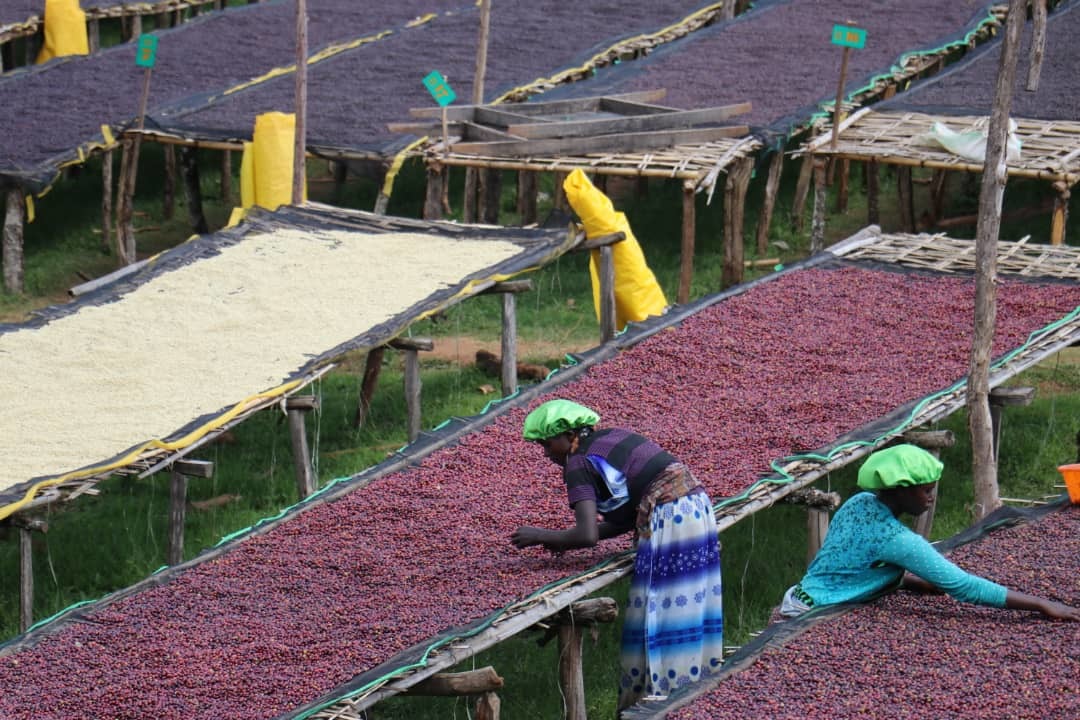Zinule #1 Uganda
Zinule #1 Uganda
Couldn't load pickup availability
Origin: Bulambuli
The area’s high altitudes are ideal for producing quality coffee, whereas the lower altitudes are used for drying purposes. At the drying yards, highly specialised professionals focus on ensuring an optimal, controlled drying process.
About the region
The varieties of this region are similar to Kenya, as farmers predominantly grow SL14, 28 and 34. The cherries come from smallholder communities, from farms that are less than 1 hectare each.
The farms are managed by family members and are located in parishes, or communities. Each parish acts as the administrative centre for 7-12 villages. These villages can be home to as few as 200 people. The farmers often work in groups, with an individual allocated as their leader.
Most of our Ugandan coffees come from different parishes. Occasionally, we may have a lot coming from a communal washing station. We work in high altitude areas, where there is a lot of potential for producing distinctive flavour profiles.
Harvest and post-harvest
In Eastern Uganda, the harvest is between August and January. In the lowlands, the harvest runs between August and October, while in the higher altitudes, it’s from September until January.
The cherries are either bought at small collection centres or delivered directly to the washing station. They are then sorted. Depending on the process, they are either taken to the pulping area or to the drying yard in Mbale. Sometimes, the cherries are delivered directly to the yard for sorting and drying.
Washed coffees are usually pulped, fermented, and dried on site. As for naturals, the cherries undergo a thorough selection process when farmers deliver them to the washing station. They are then taken to the drying yard and fermented on drying tables. This is done by adjusting the layers of the coffee, depending on the type of preparation and fermentation.
Share







